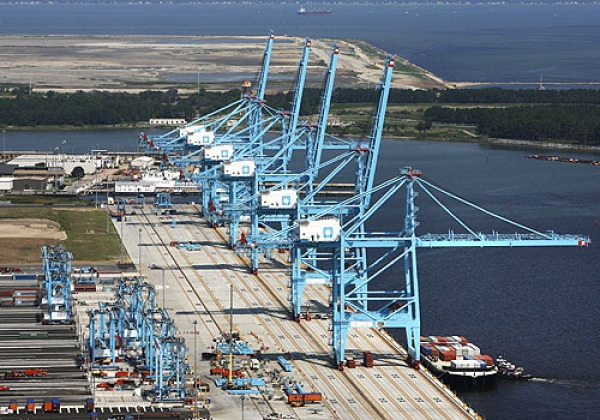Costa Rica News – With Nicaragua building its own version of the Panama Canal, it seems that Costa Rica wants to invite itself to the party. A project for a new Atlantic Mega Transshipment Port (MTA) in Costa Rica, could move to its next phase in 2015, with the start of feasibility studies.
 This would be the first stage of a dry canal proposed by the Amega company to connect cargo movements between the Pacific and Atlantic oceans.
This would be the first stage of a dry canal proposed by the Amega company to connect cargo movements between the Pacific and Atlantic oceans.
While the rest of the dry canal has failed to develop, the mega port itself would be profitable, it was stated by Jose Dengo, project manager of CDG Environmental Advisors, who explained that this infrastructure ensures the development of Limon Province and Costa Rica in general.
Amega is an international consortium of investors, experts and companies specializing in the area of infrastructure, logistics, shipping and railways, he said. The registered office of the consortium is Barbados and major shareholders are Canadian, British and American.
CDG is responsible for all environmental and social responsibility parts of the project. “We have become the representatives of Amega in Costa Rica,” he said.
“In 2004, Amega recognized the need to build an alternative to the Panama Canal and decided on Costa Rica. In 2006 the first presentation of the project was made to the government, which showed much interest, but because of the scale of the project, suggested it be developed in stages.
“A transshipment port in Moin was chosen as the first stage because it is a project that already has a market today, which would be strengthened by the expansion of the Panama Canal.
“An increased Panama Canal toll after the expansion makes the project more attractive as a potential alternate route,” said Dengo.
“But even if the rest of the dry canal never develops, the new mega port alone would be self-sufficient and profitable.
“The port would be specialized in international cargo movement.
“They’ll get big ships to unload their containers, which are transshipped to smaller vessels that distribute the cargo regionally, more efficiently than a big ship.
“The trend in the international shipping trade is towards ever larger ships with issues of economies of scale, but these ships are only efficient provided they make fewer stops,” the promoters explain.
“Costa Rica is in a prime position for this type of project for several reasons,” they say.
“On the technical side, of all points in Central America, it is the simplest, as the region is mountainous and only Costa Rica has a connection between the relatively flat lands and the oceans.
“In addition, it was suggested as a site close to Panama.
“As a country factor, it has political, economic and legal security stability.
“Shipping companies and port operators recommended not to do the project in Panama, not to concentrate everything in this country,” state the promoters.
“There is a factor that the lack of hurricanes makes us more competitive, because the Caribbean coast has never suffered a direct hit.
“This will not affect APM Terminals because the projects are almost identical in scale, capacity and cargo handling equipment that will be on the dock, but they will differ in terms of service they will provide,” the promoters claim.
“The APM project is exclusively for movement of national exports and imports, while the Amega project is for the international cargo market that today does not exist in Costa Rica.
“The APM port will have almost the same capacity as the Amega port and it is clear that this company could provide the transshipment service, but transshipment is a market that is competitive and fast. You can not compete in this market if domestic cargo for export and import should take priority and is handled in the same port,” the promoters claim.
They say they are waiting for the green light from the government to start the feasibility studies, which would be the second phase.
These feasibility studies would begin next year, after multiple delays.
From thebulletinpanama.com
